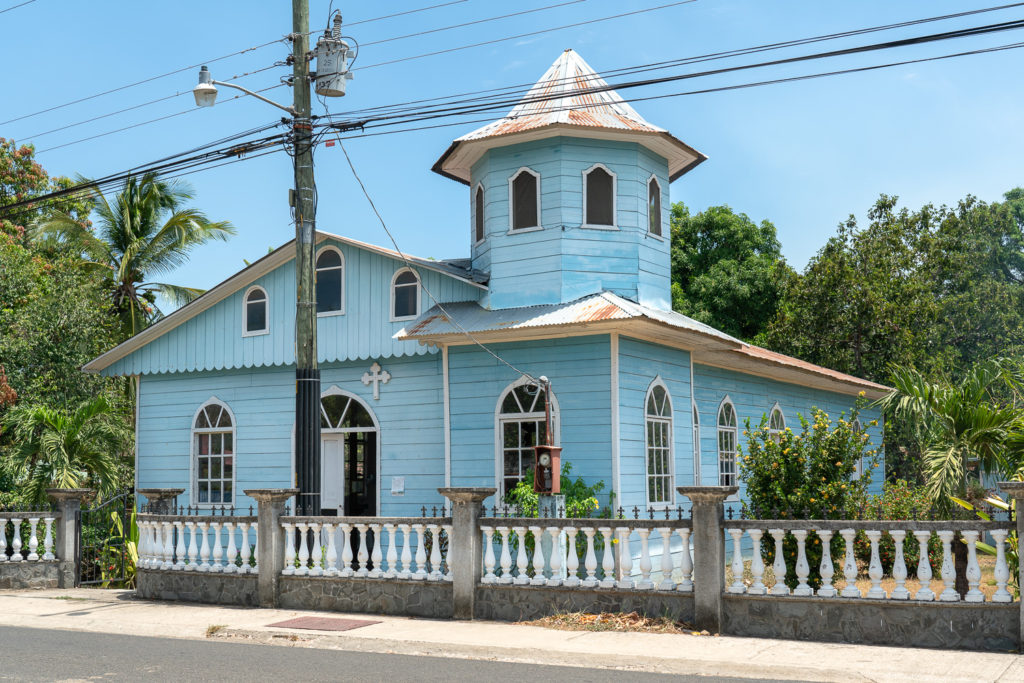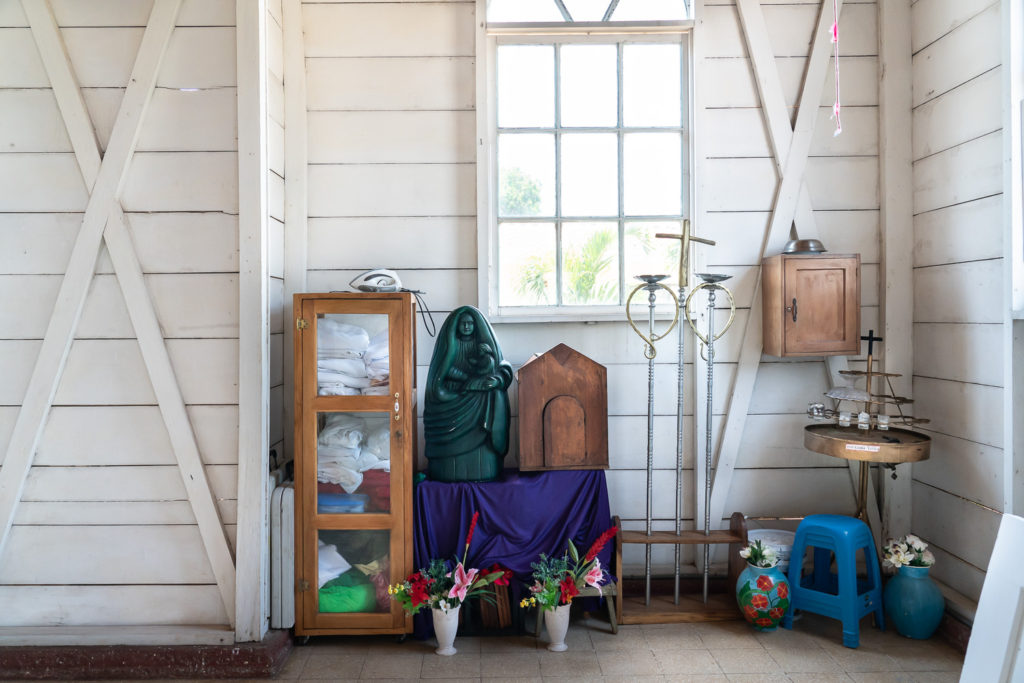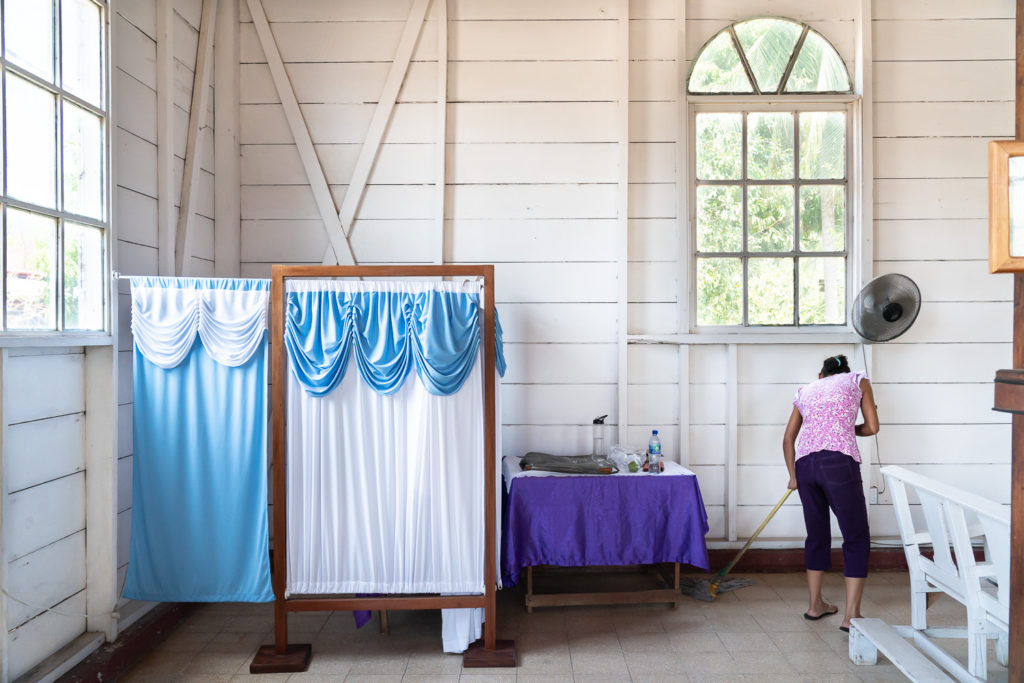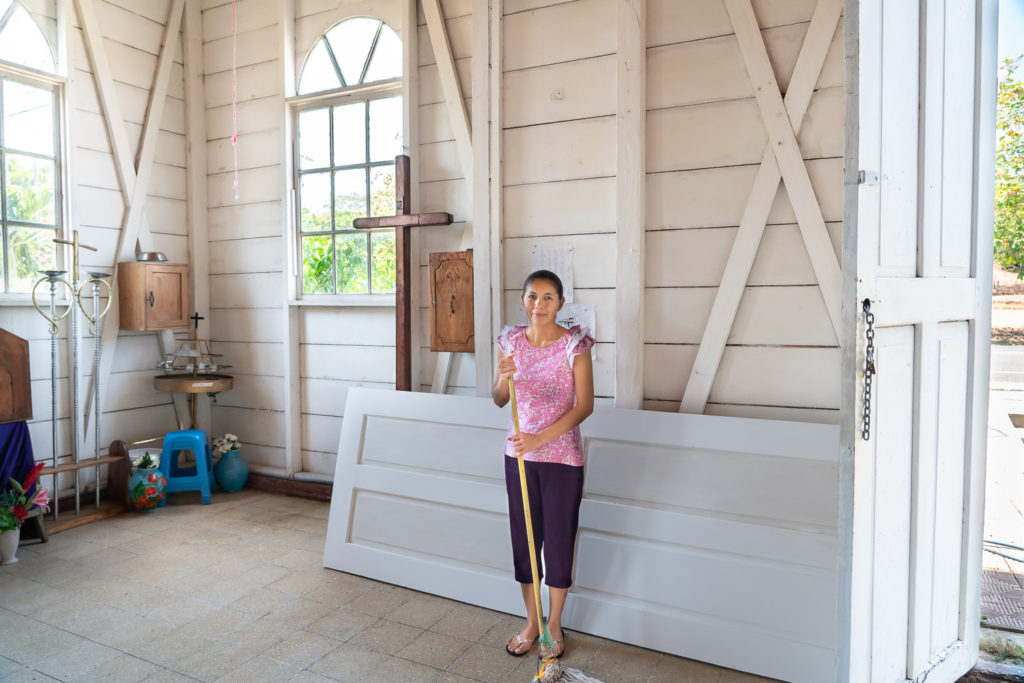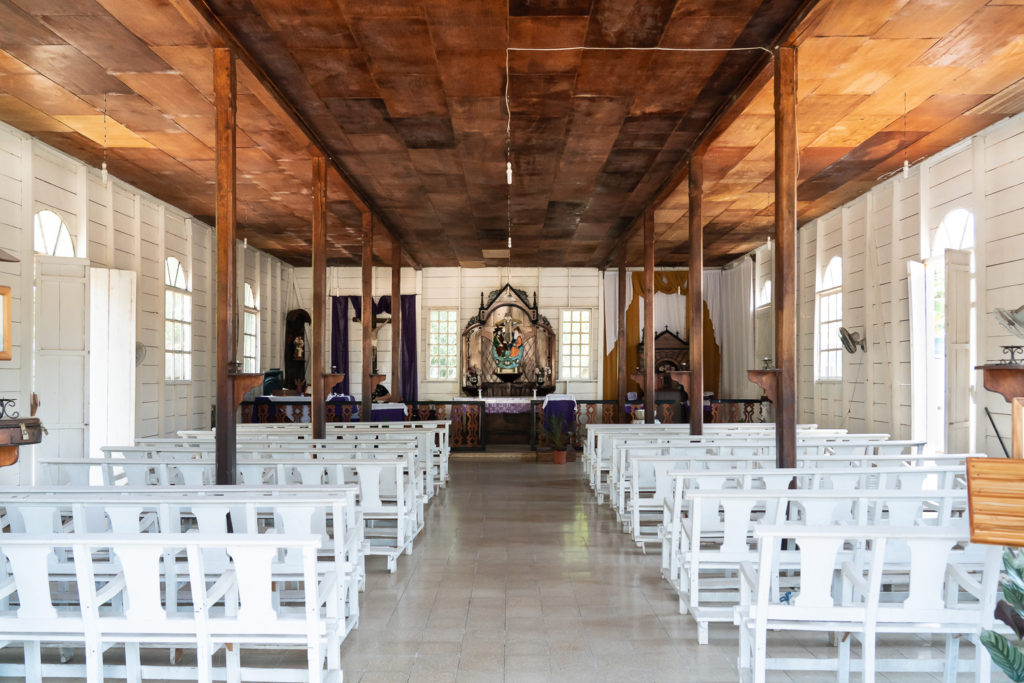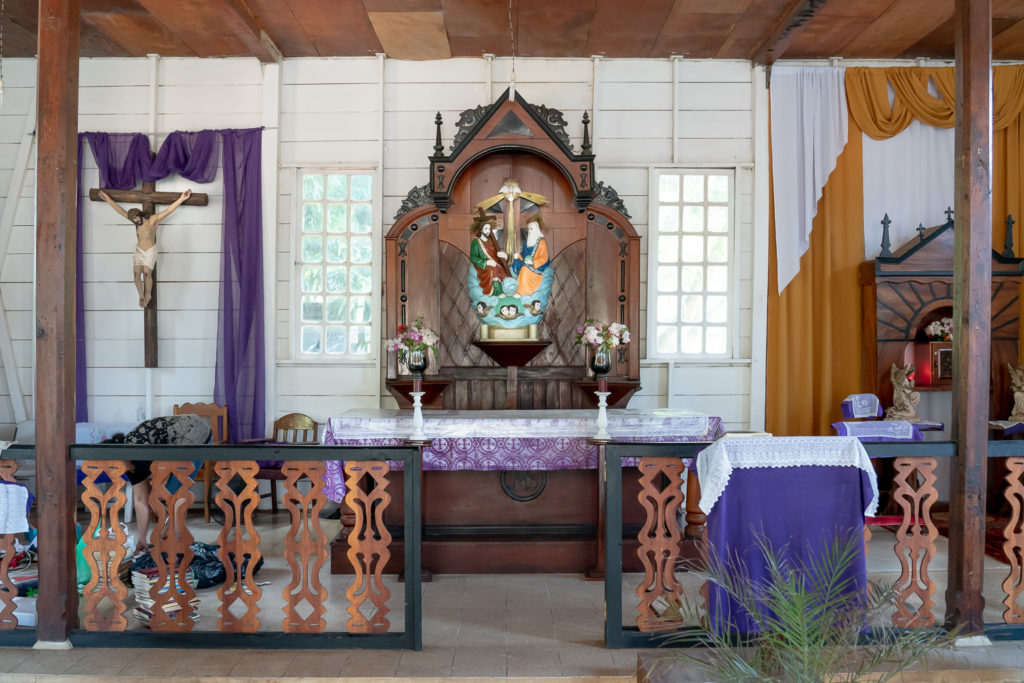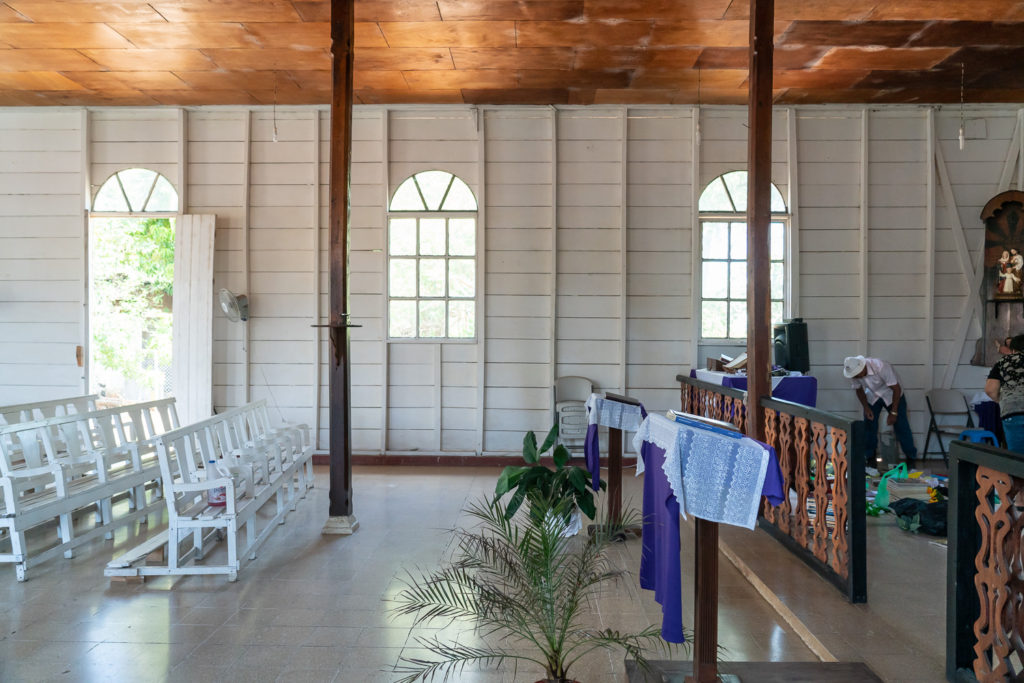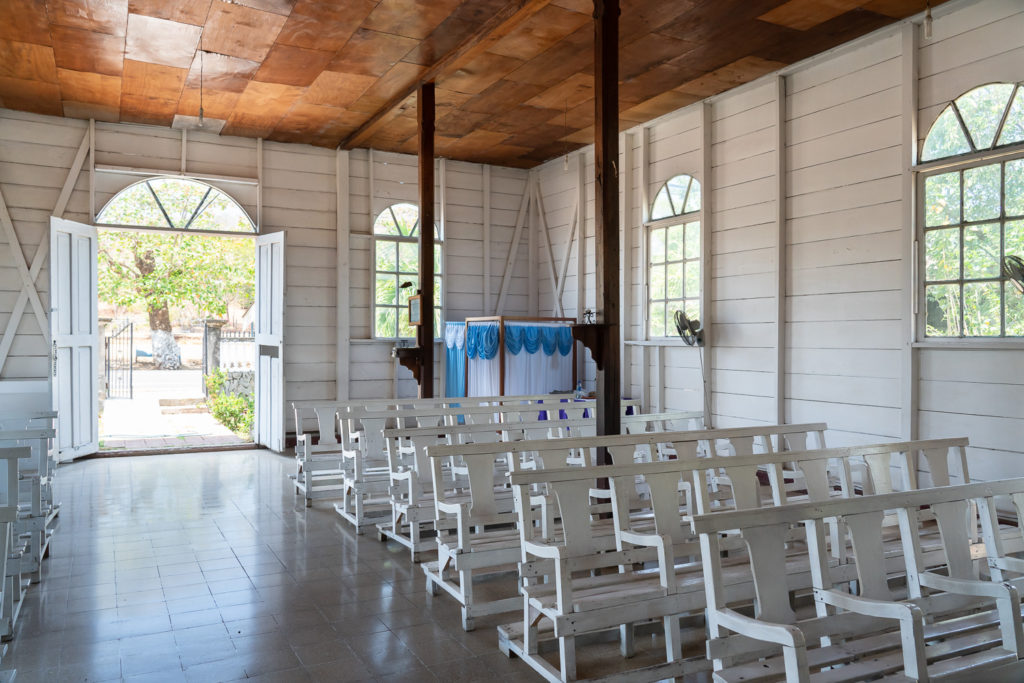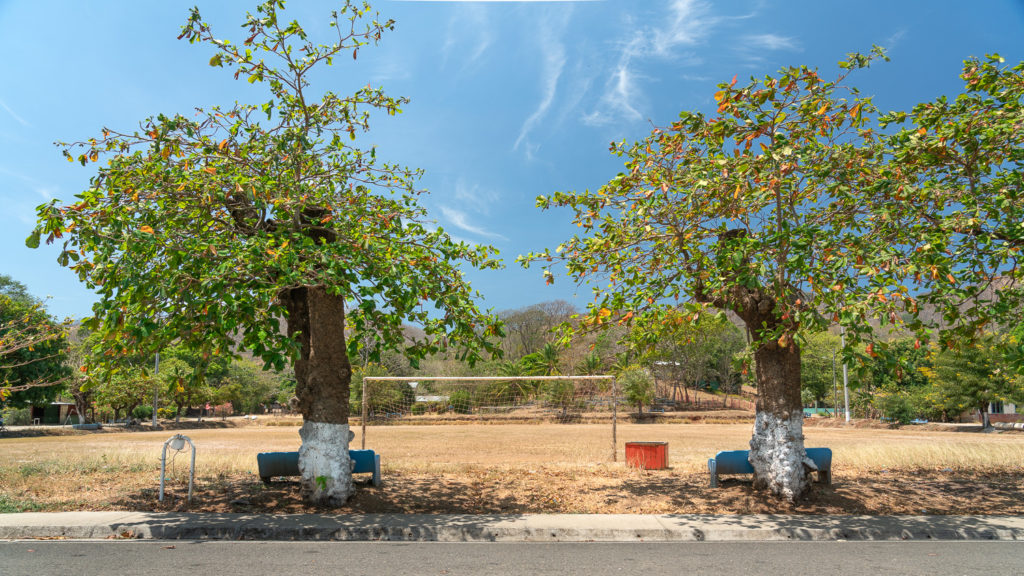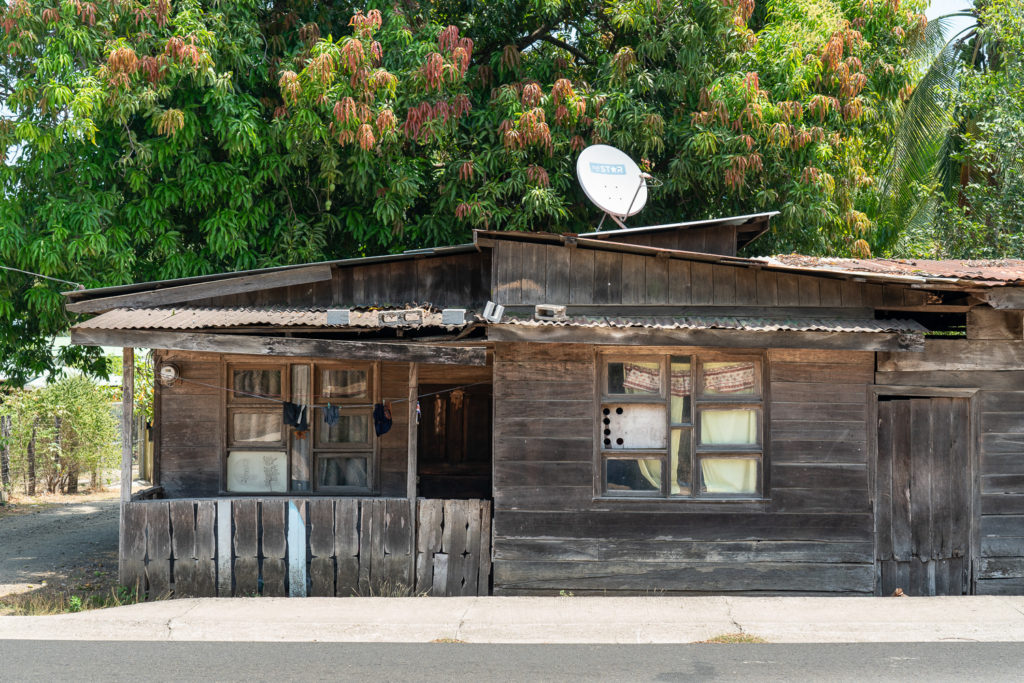Costa Rica – Iglesia Rìo Seco
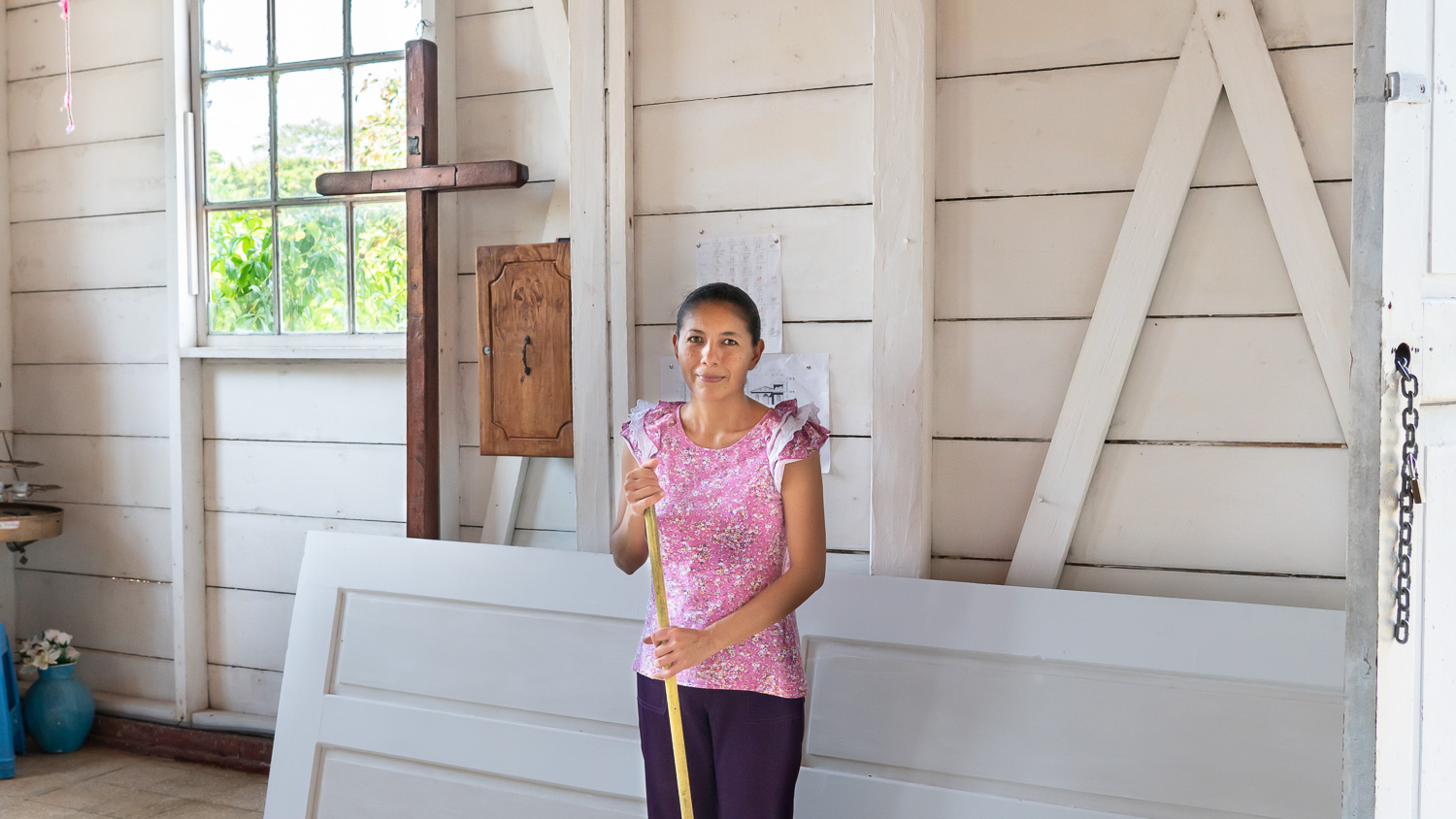
Rìo Seco is a small community not far from where I stayed on the coast of Costa Rica. The name translates to dry river, and it’s in the midst of golden pastures surrounded by small ridges. Its modest houses stretch for a short distance along route 160. There are two small stores and a few side streets with additional homes. About halfway through the village there is a soccer field on one side of road and a small church on the other. Driving through Rìo Seco one last time on a Sunday after checking out of the lodge, I pulled the car over and took a short walk along the street. I had seen some interesting old wooden structures on other passes through the village and this would be my last chance to photograph them. As luck would have it the church doors were wide open and I ventured inside. Services were over and there were several people neatening up.
The church, Iglesia Rìo Seco (Dry River Church), is a modest wooden Catholic church with a beautifully simple interior. The wooden boards that cover the exterior are painted sky blue. Inside, the boards and the framing are painted white – there are no other finishes on the walls. The ceiling is high, at least 12 feet (4 meters), and the windows are tall, with half-round transoms. A flat unfinished wood-paneled ceiling has aged to deep golden browns. Sparseness reigns here: Four pair of slender wood posts support the ceiling; the floor is plain stone tiles; there are four fans spaced on the walls; for lighting at night there are nine bare bulbs hanging in a grid and three across the front. There is no stair inside to the second floor above (maybe there’s an exterior stair at the back of the building?). The narrow raised sanctuary at the front contains a central alter, with a crucifix on one side and a side alter on the other.
If I needed a place to pray this is a place I would come to – beautiful simplicity, natural materials, and no pretense.
